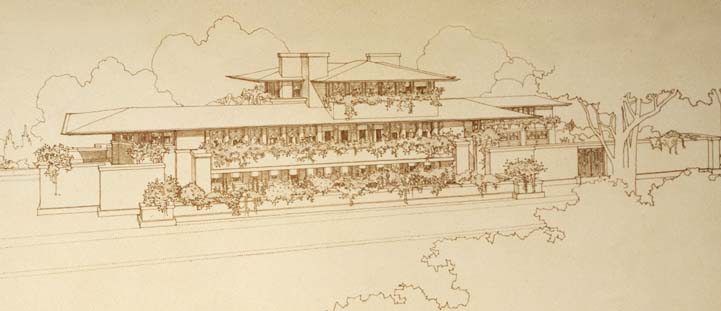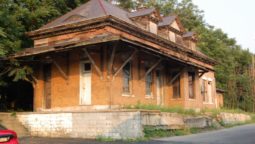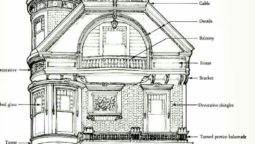How to Describe Architecture for your application to the National Register of Historic Places

A Step by Step Guide to Describing Architecture
You are looking at a building, but you are unsure how to describe the roof or windows or that funky little detail. How do you find the vocabulary to properly describe that architectural element? Well, with this post you will walk away with a few tips and resources to help you describe a building.
Tip 1:
Understanding what style a building is can help your description immensely. Whether you are talking about an Italianate structure, Queen Anne, Richardsonian Romanesque or something else, knowing a style will help you discuss the whole and allow you to more easily search for the elements.
These books are immensely helpful in learning architectural styles:
–A Field Guide to American Houses: The Definitive Guide to Identifying and Understanding America’s Domestic Architecture by Virginia Savage Mclester offers an in-depth look into residential styles of architecture.
– Identifying American Architecture: A Pictorial Guide to Styles and Terms, 1600-1945 by John J. G. Blumenson is a small visually driven guidebook to help you quickly ascertain a style. This is a great volume to keep in your glove box.
– American Vernacular Design, 1970-1940: An Illustrated Glossary by Herbert Gottfried and Jan Jennings will help you understand commercial architectural styles in addition to residential.
You can also find a myriad of architectural style guides online. Take these with a grain of salt, because some terminology popularized by television is not the terminology you should utilize when working on a historic designation.
For example, did you know that Victorian is not a style? Victorian is an era and there are a myriad of styles associated with this time period with the most common being Queen Anne style homes. The ones to trust come from the state and local historic preservation offices. The Pennsylvania architectural field guide website is incredibly helpful.
Tip 2:
At this point you’ve learned the difference between Art Moderne and Prairie style, but you aren’t sure what that thing is above the window. Knowing a style will help you narrow down what you are looking for.

These books are great guides to building elements:
– Old House Dictionary: An Illustrated Guide To American Domestic Architecture 1600-1940 by Steven J. Phillips dives deep into the components of a window or different brick patterns. It is a great beginners (or expert) resource for knowing how to describe practical and decorative building elements.
You’ll find in the previously mentioned resources terminology for building elements. For example: the Pennsylvania architectural field guide website lists “identifiable features.” If you are able to use the guides to identify the style you can then learn that the architectural element that kind of looks like teeth below toward the top of a teeth are called dentils (I remember this term, because a dentist looks at teeth and dentist and dentil sound kind of similar).
Tip 3:
Once you know how to find the words to describe the building, you can start your verbal illustration. Begin with the primary facade (front) of the building and describe it’s style first and then focus on the architectural details.
Here is an example: “ This two story residential property is in the Greek Revival style. The structure has a pediment roof and is wood construction; the primary facade has a raking cornice below the eaves creating a decorative element for the pediment.” The description would go on to describe the remainder of the facade followed by each elevation (indicate which elevation with direction north, south, east, or west).
If you have any uncertainty for your style of writing as you develop this architectural description, you can reach out to the Ohio Historic Preservation Office for strong examples of National Register of Historic Places nominations or visit the National Parks Service website and read the examples they have posted online. As you develop your architectural style vocabulary you will be able to hone in on key elements that help define the structure: roof style, window shape, building materials, and decorative details to assist with a description.
Good luck!
![]()





